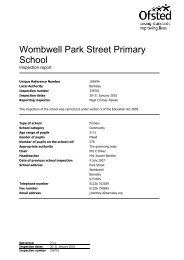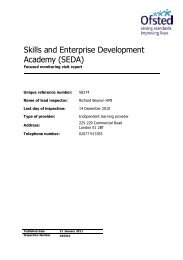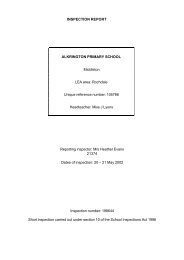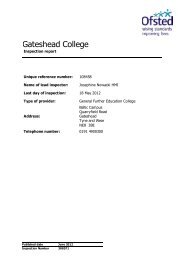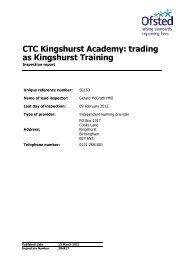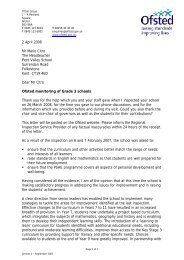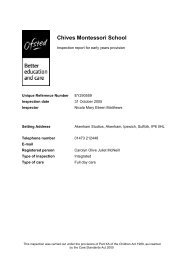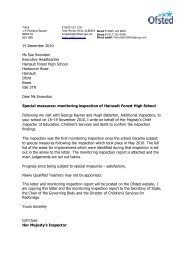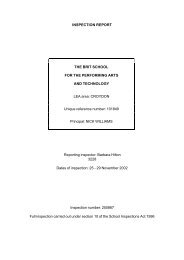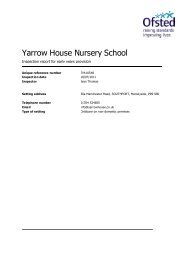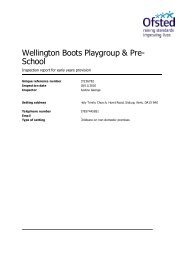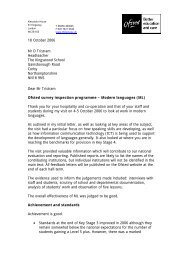pdf Section 3 inspection report - Ofsted
pdf Section 3 inspection report - Ofsted
pdf Section 3 inspection report - Ofsted
Create successful ePaper yourself
Turn your PDF publications into a flip-book with our unique Google optimized e-Paper software.
appropriate basis for school improvement. The monitoring and evaluation of<br />
teaching have improved. During this <strong>inspection</strong> senior managers conducted joint<br />
lesson observations with HMI; lessons were graded with appropriate<br />
professionalism but there was some misunderstanding of the relationship between<br />
the quality of learning and the quality of teaching.<br />
The roles of the leadership team are clearly delineated; half-termly departmental<br />
reviews provide a useful focus for reviewing the school’s progress. Some middle<br />
managers have an improved understanding of their responsibility and are growing<br />
in confidence in their role; however, there is undue variation in the quality of<br />
leadership and management in departments. Senior staff are more visible in the<br />
public areas at the change of lessons; however, there are key areas of the school<br />
that are inconsistently or ineffectively supervised. This is having a direct impact on<br />
punctuality to lessons. The school needs to take a strategic approach to<br />
addressing the persistent problems related to punctuality; similarly, the<br />
identification of areas of potential disruption needs a more proactive approach. As<br />
<strong>report</strong>ed previously, the school does not comply with the statutory requirement to<br />
conduct an act of collective worship. Tutor group periods consistently fail to<br />
provide opportunities for the pupils to reflect on spiritual, moral, social or cultural<br />
issues.<br />
The governance of the school is satisfactory. The work of the governing body is<br />
conducted through an appropriate committee structure. The governors have<br />
appointed an experienced headteacher to lead the school from September 2005.<br />
The pupils’ attitudes and behaviour were at least satisfactory in 34 lessons and<br />
good in 13. In lessons where the teachers had high expectations, the pupils<br />
behaved well, took responsibility for their work and worked productively. A<br />
significant proportion of pupils did not actively engage in the work with interest and<br />
concentration, except when lessons were well managed and the teaching increased<br />
their curiosity and imagination. The pupils’ lack of positive response was directly<br />
linked to the quality of teaching; when the school’s procedures were not applied<br />
the pupils exploited the situation. The school’s attempts to tackle poor behaviour<br />
in lessons are starting to have a positive effect. The isolation room and<br />
individualised group work with disaffected Year 8 pupils have led to a significant<br />
reduction in poor behaviour.<br />
The overall rate of attendance, at 88 per cent, remains well below the national<br />
average for secondary schools. Unauthorised absence remains high as does the<br />
rate of truancy in the afternoon. An appropriate rewards system has been<br />
introduced to improve attendance but punctuality is still unsatisfactory. The rate of<br />
exclusion has decreased significantly; there has been 50 fixed term and one<br />
permanent exclusion so far this year. HMI conducted a discussion with a group of



